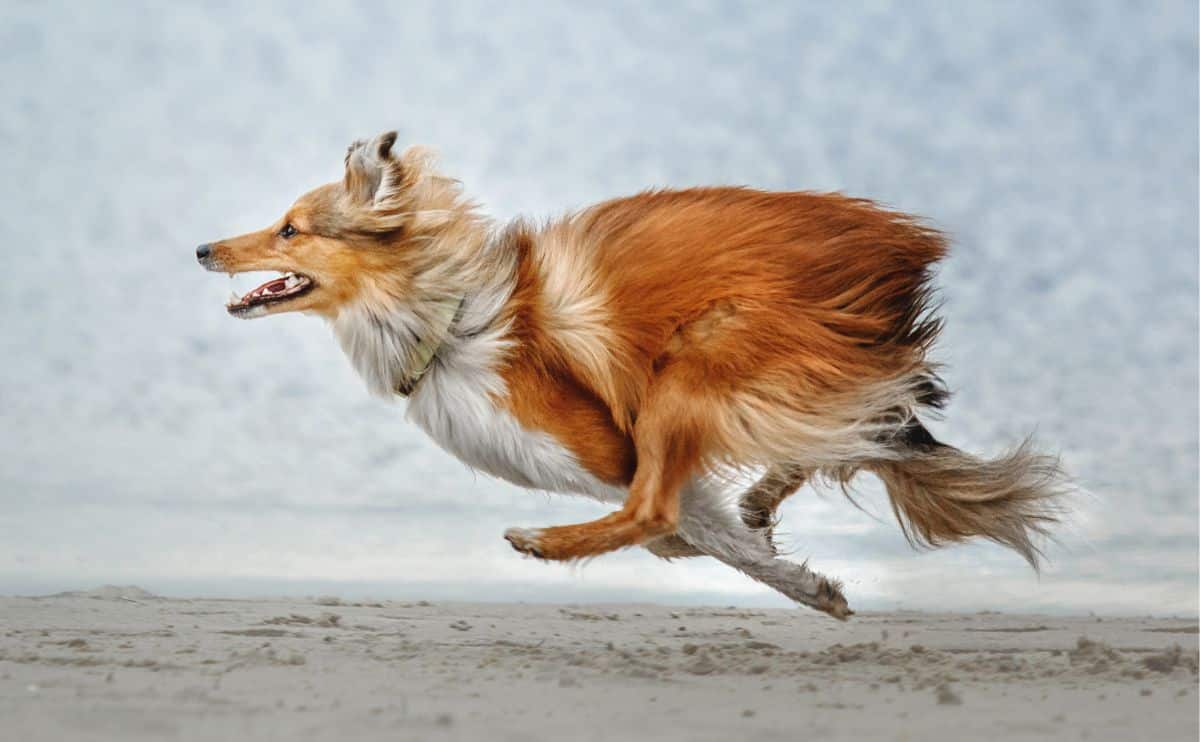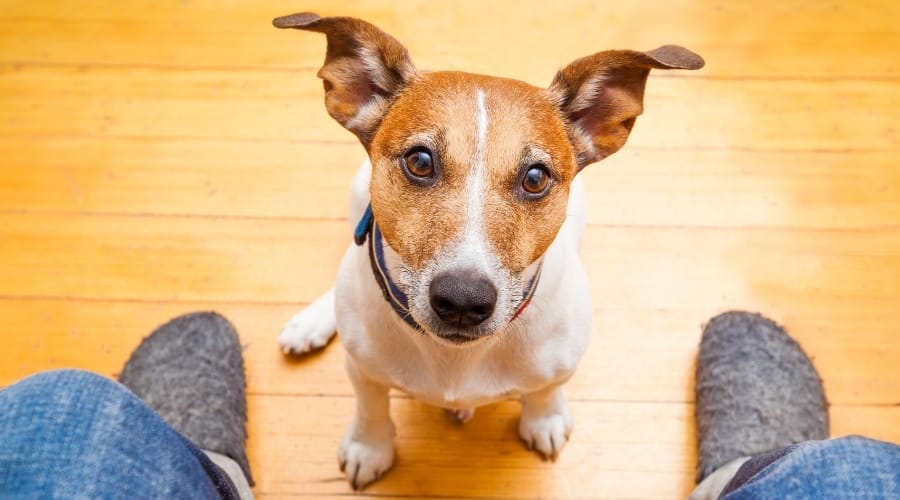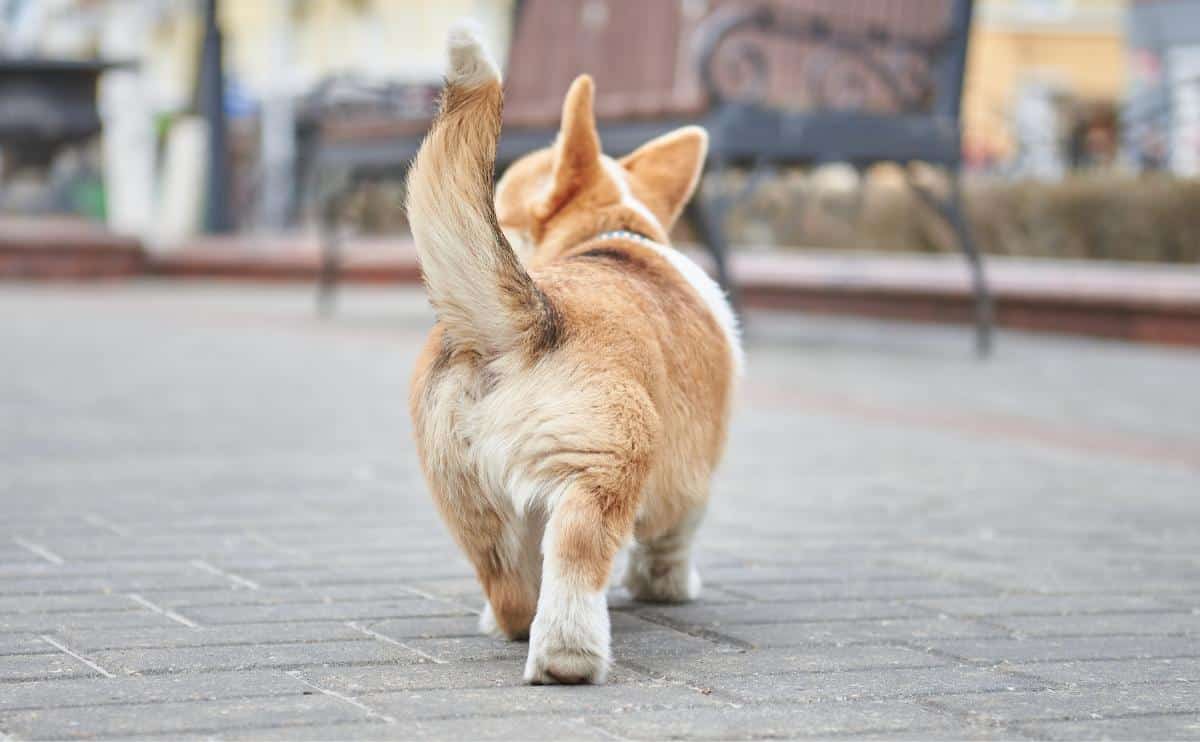Can Dogs Smile? The Truth Behind Those Happy Faces
When you purchase through links on our site, we may earn a commission. Here’s how it works.
Every day, when I walk through the door, my dog Daisy is there, her tail wagging furiously, eyes shining, and what looks like the biggest, happiest smile on her face. She’s one of those dogs who always seems to be smiling, but she’s not the only one. My other dogs do it, too, in their own ways. While I’d love to believe they’re grinning ear to ear because they love me that much, it got me thinking: can dogs smile like we do, or are we just reading human emotions into their adorable faces?
Table of Contents
We feel it in our hearts that they’re smiling at us. But when it comes to dogs, emotions aren’t always shown the way we think. Here’s what’s really behind that heart-melting doggy grin.
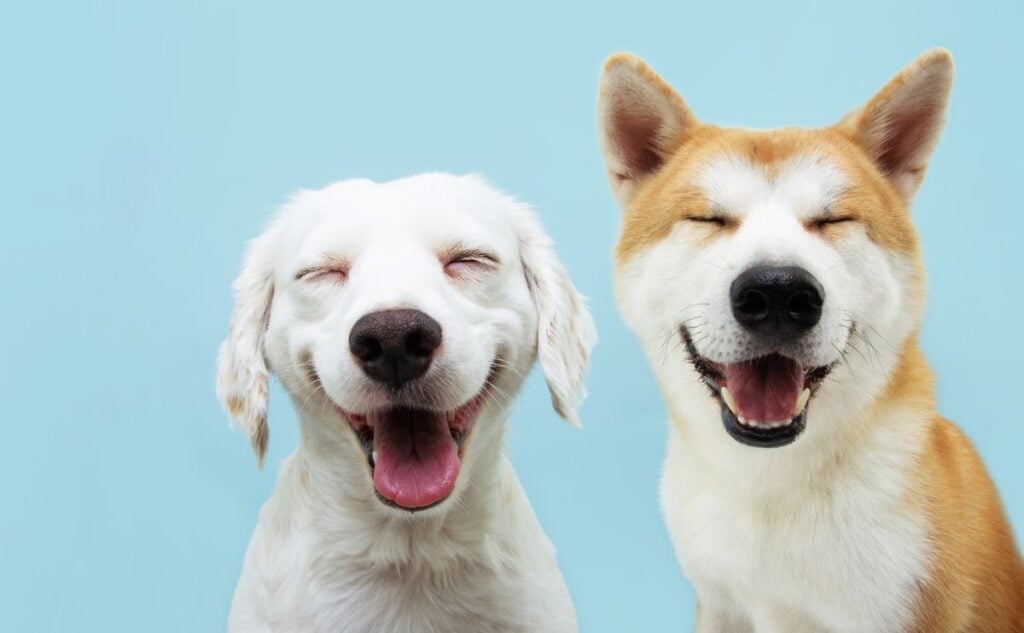
The Evolution of Dog Facial Expressions
Dogs can make facial expressions, but they do not always carry the same emotional weight as human expressions.
Researchers at Duke University have found that as dogs were domesticated, their facial muscles evolved in ways that distinguish them from their wild cousins. Compared to wolves, domestic dogs developed two key differences: they can raise their inner eyebrows more dramatically, and they are capable of making bigger, more expressive eyebrow movements overall. This eyebrow control marks the most significant facial muscle difference between dogs and gray wolves.
It was not just a random evolutionary twist, either. Those soulful, eyebrow-raising looks helped dogs communicate more effectively with humans, tapping into something deeply social in our brains. Researchers have even found that when a dog locks eyes with a human, it triggers the release of oxytocin, the same hormone that helps mothers bond with their babies. It is no wonder that a simple glance from our dogs can make us feel like the center of their universe.
Can Dogs Smile Like Humans?
As much as we want to believe our dogs are grinning at us like old friends swapping inside jokes, scientists and behaviorists tell a slightly different story. Dogs do not smile the same way humans do. When we flash a smile, it is usually a deliberate expression of happiness, humor, or affection.
An open mouth, relaxed face, and soft eyes are a dog’s way of saying, “I feel safe, friendly, and content.” They are not trying to impress us with their dazzling smiles as we might in a family photo, but they are sending a real signal that they are comfortable in our presence.
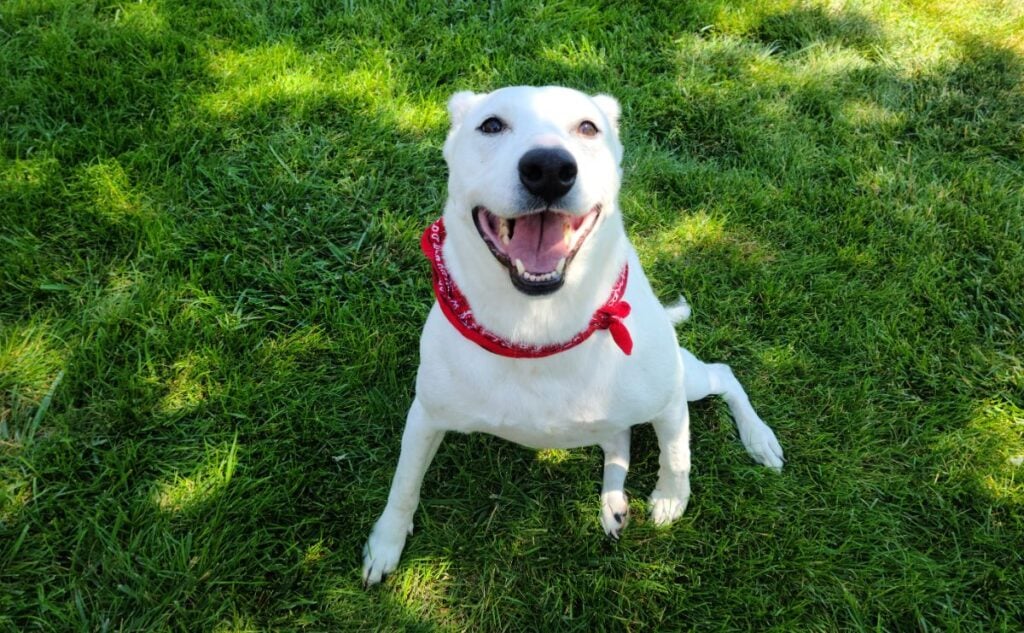
This upturned expression occurs most often in positive situations, making it the closest expression dogs make to a genuine smile. However, dogs do not smile in the same way we do. Our tendency to attribute human emotions and traits to our pets significantly contributes to our perception that our dogs are smiling.
According to researchers at the University of Portsmouth, dogs are more expressive when a human watches them. Their 2017 study found that dogs use facial expressions, like raising their eyebrows or opening their mouths, in a way that seems designed to communicate with humans.
In other words, a dog’s “smile” is less about consciously expressing joy and more about showing a comfortable emotional state. It is not an intentional social gesture the way it is for us. However, that does not make it any less meaningful. The bond between dogs and humans is so deeply ingrained that many dogs pick up on our emotional cues, including our smiles.
Some studies suggest that dogs have evolved to recognize human facial expressions and even respond in kind. A happy, relaxed owner can encourage a dog to mirror those emotions, flashing that wide, lolling grin we find so irresistible. It may not be a “smile” in the way we define it, but it is a powerful reflection of the connection we share with our dogs, stretching back thousands of years, all the way to the first campfires shared between humans and wolves.
What a Dog “Smile” Really Looks Like
The classic canine smile usually includes the following:
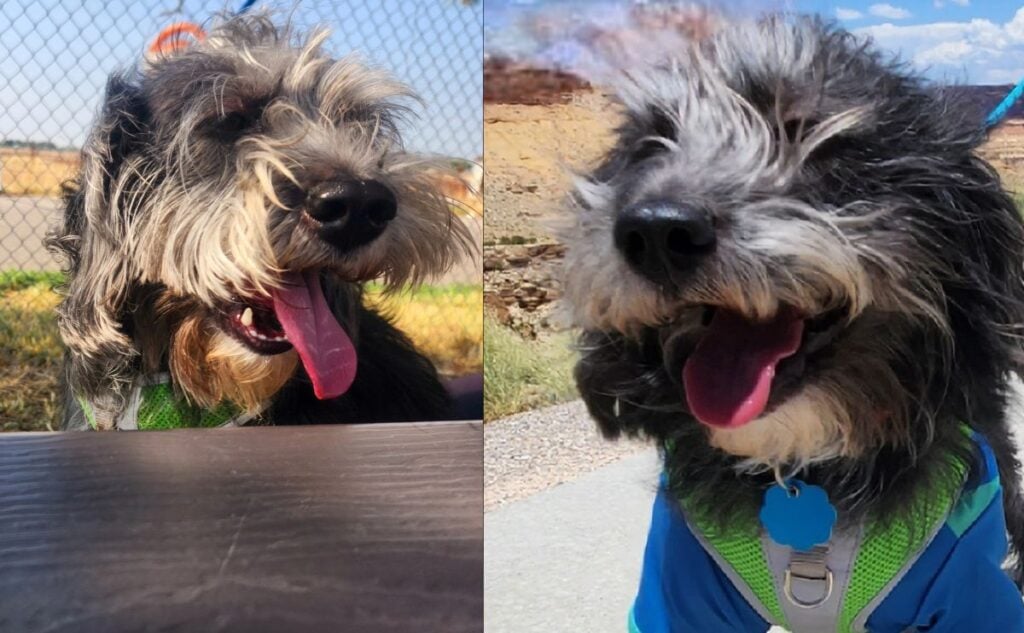
- A slightly open mouth
- Relaxed lips, with the corners slightly lifted
- A loose, wagging tail
- Soft eyes or even squinty eyes (think relaxed, not fearful)
It’s often paired with other happy signals, like a play bow, a wiggly butt, or bouncing in place. This expression is a natural result of feeling calm, content, and connected, not an attempt to mimic a human smile.
Ready to See Some Real-Life Dog Smiles?
Pictures are sweet, but nothing captures the magic of a dog’s smile like seeing it in action. From goofy grins to soft, happy smirks, these dogs are living proof that joy has no words, just wagging tails, shining eyes, and wide, fantastic smiles. Take a look and try not to grin right back.
Myths About Dog Smiles
Dog smiles are one of the most heartwarming sights in the world but also one of the most misunderstood. While treating every grin like a mirror of human emotions is tempting, the truth behind those toothy expressions is a little more complicated.
Myth 1: If a Dog Shows Its Teeth, It Is Always Being Aggressive.
Not necessarily. While bared teeth can be a sign of warning or fear, a submissive grin looks very different. Submissive grins are often accompanied by relaxed or slightly crouched body language, soft or squinty eyes, and a wagging tail held low. They are a dog’s polite way of saying, “I am friendly. Please do not be upset.” Reading the full body language, not just the mouth, is key.
Myth 2: A Smiling Dog Is Always Happy.
Sometimes, yes, but not always. Dogs can flash an open-mouth “smile” when they are relaxed and joyful. They can also do it when they are anxious, submissive, or overwhelmed. Context matters. A happy dog will have loose, wiggly movements. A nervous dog may seem stiff, low to the ground, or avoid direct eye contact.
Myth 3: You Can Judge a Dog’s Mood by Its Face Alone.
A dog’s face tells part of the story but never the whole thing. Tail position, ear posture, body tension, and even how a dog moves offer essential clues about their feelings. To truly understand a dog’s emotional state, you must see the entire picture, not just the smile.
Myth 4: Dogs Smile to Make Humans Happy.
While dogs are incredibly attuned to human emotions and may mirror our positive energy, they do not “smile” in a conscious attempt to please us. Their relaxed, open-mouthed expressions are natural signs of how they feel inside. The bond we share with them can encourage more of those happy expressions, but a dog’s smile is still primarily about their emotional experience.
Do Dogs Smile When They’re Happy?
Yes, many dogs “smile” when feeling relaxed, safe, and joyful. A happy dog smile usually comes with an open mouth, soft eyes, a wagging tail, and a loose, wiggly body. It is not exactly the same as a human smile, but it is a natural expression of comfort and contentment. If your dog flashes a big grin during playtime, snuggle sessions, or when greeting you at the door, chances are you have a happy dog.
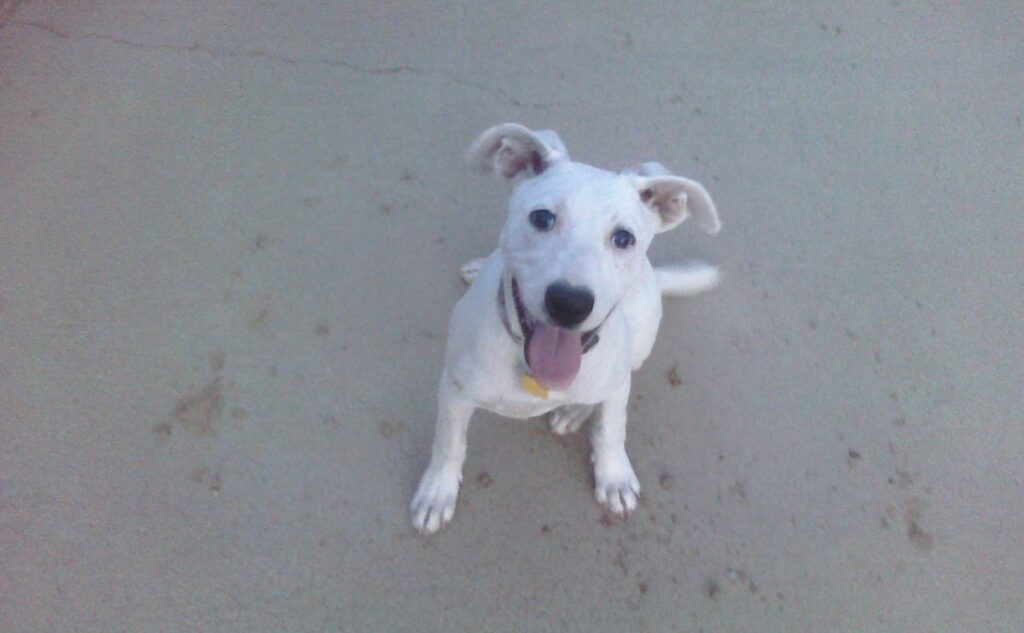
For example:
- Doggy smiles during playtime paired with a wagging tail, bouncy movements, and relaxed body posture are almost always a sign of pure joy.
- A smile when meeting new people, especially if accompanied by curious body language and soft eye contact, usually signals friendliness and excitement.
- A smile, when being scolded, corrected, or approached too quickly, especially if paired with lowered ears, a tucked tail, or submissive behaviors, might not be a happy smile at all. It could be what behaviorists call a submissive grin. This is a way for a dog to say, “Please do not be upset with me.”
This is why reading the whole body, not just the face, is so important. Look at the ears, tail, eyes, mouth, and posture together. A truly happy dog will have loose, flowing body language, not stiff or tense. Their expressions will seem effortless and easy, never forced.
When you tune into all these signals together, you can gain a better understanding of what your dog is feeling.
How to Spot a True Happy “Smile” vs. Submissive Grin
Not all dog smiles are created equal. Some dogs flash a “submissive grin” when they are feeling unsure, nervous, or trying to avoid conflict.
A submissive grin is a classic appeasement signal. It is your dog’s way of saying, “I mean no harm,” and asking for reassurance from you or others. It is polite, peaceful, and often very sweet, but it carries a distinctly different emotional weight than a joyful grin.
Signs that a “smile” might actually be a submissive grin include:
- Lip licking or repeated yawning
- Lowered body posture, almost crouching
- Tense muscles rather than loose, wiggly movement
- Tucked tail or one held very low
- Flattened or pulled-back ears against the head
- Avoiding direct eye contact or looking up with the whites of the eyes showing (“whale eye”)
Recognizing a submissive grin is crucial because it indicates that your dog requires understanding, not correction. In these moments, the best response is calm reassurance: soft speech, relaxed body language, and space if your dog needs it. Pushing too hard, even with well-meaning attention, can overwhelm a dog that is trying to convey peaceful intent.
Learning to distinguish between a genuine smile and a nervous grin can make a significant difference in your relationship, helping your dog feel truly safe, seen, and respected.
Can Dogs Imitate Human Smiles?
Dogs have an incredible ability to read human emotions, and sometimes, they seem to mirror them right back.
Research suggests that dogs are not just passive observers of our moods. They actively respond to our emotional expressions, including our smiles. Studies have shown that dogs can distinguish between happy and angry human faces, and many dogs adjust their behavior based on what they see.
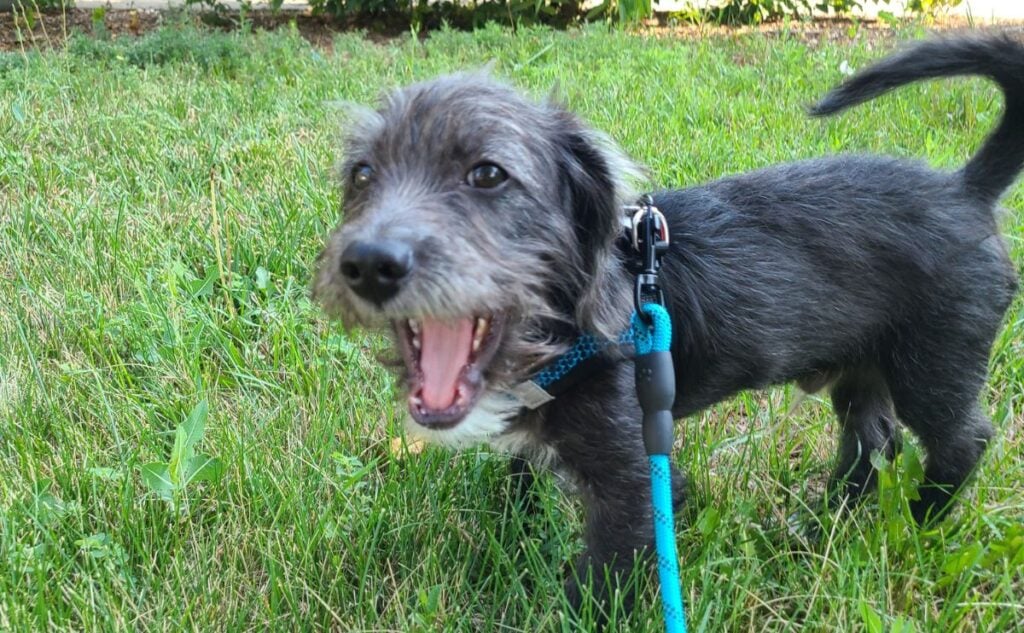
While dogs do not consciously “copy” human smiles the way another person might, their relaxed, open-mouthed expressions often become more frequent when they are around smiling, happy humans.
It is less about imitation in the human sense and more about emotional synchronization. Your dog picks up on that positive energy when you smile and feel joyful. A dog’s body language, including those big, relaxed grins, often reflects the bond you share.
In short, dogs are not mimicking us out of politeness. They share a moment of emotional connection, expressed in a way only a dog can: with a wagging tail, shining eyes, and a wide, heart-melting smile.
Born to Smile: Breeds That Always Look Happy
While they might not be exactly smiling, some dogs do not have to try very hard to look cheerful, and their faces seem built for joy. Thanks to the shape of their mouths, eyes, and facial muscles, a few breeds naturally wear what looks like a permanent grin. Even when snoozing, begging for snacks, or plotting their next adventure, these dogs carry a happy-go-lucky expression that is hard to resist.
Here are a few famously “smiley” breeds:
Samoyed: Masters of the “Sammy Smile”
Nicknamed for their signature “Sammy smile,” Samoyeds are practically the poster dogs for permanent happiness. Their upturned mouths are not just cute, either. They help prevent drool from freezing on their faces in cold climates, a clever adaptation from their days of sled pulling.
Golden Retrievers: Walking Rays of Sunshine
With their wide mouths, soft eyes, and endlessly friendly demeanor, Golden Retrievers seem to radiate good vibes. Whether they are chasing a tennis ball or greeting a stranger like a long-lost friend, their open, joyful faces are part of why they are one of the most beloved breeds in the world.
Bulldogs: The Grin That Means Business (and Belly Rubs)
Bulldogs might look a little rough around the edges with their wrinkled faces and stocky builds, but they are softies at heart. Their wide, lopsided grins and droopy eyes often make them look like they are constantly smiling, especially when they are lounging in a sunbeam or waddling over for a belly rub.
Shiba Inus: The Grin That Means Business (and Belly Rubs)
Shibas are known for their foxlike features and mischievous expressions. When they are relaxed or pleased with themselves (which is often), they flash a charming, catlike smile that makes them look both proud and playful at the same time.
Staffordshire Bull Terriers: Smiling With Their Whole Soul
Despite outdated stereotypes, Staffies are incredibly affectionate, loyal, and full of life. Their wide mouths and expressive eyes give them a natural, exuberant grin that perfectly matches their fun-loving personalities.
Cocker Spaniels: Sweetness You Can See
With their soft, rounded faces and sweet, pleading eyes, Cocker Spaniels often look like they are smiling even when they are simply waiting patiently for attention (or snacks). Their gentle, affectionate nature shines through in every expression.
Of course, plenty of other dogs, including mixed breeds, can have wonderfully expressive, smiley faces. A lot of it comes down to individual personality. But if you have ever met a Bulldog flashing a goofy grin or a Golden Retriever greeting you with that wide, wiggly joy, you know firsthand just how contagious a dog’s smile can be.
How to Encourage More Smiles from Your Dog
Dogs do not just wake up grinning. Their smiles are a reflection of how safe, loved, and healthy they feel in their everyday lives. If you want to see more of those big, happy faces, it starts with meeting both their emotional and physical needs.
Simple ways to keep the joy flowing:
- Create positive experiences: Focus on positive reinforcement training, gentle handling, and rewarding interactions. Dogs who trust their environment are much quicker to show relaxed, joyful expressions.
- Keep their minds and bodies active: Daily exercise, playing games, sniff walks, puzzle toys and training challenges help stimulate your dog mentally and physically. A tired, fulfilled dog is a relaxed, smiling dog.
- Provide a safe, consistent environment: Calm, predictable routines help dogs feel secure. Loud arguments, harsh corrections, or chaotic surroundings can erode their sense of safety. A peaceful home gives your dog the confidence to let their true personality and smiles shine.
- Feed a balanced, nourishing diet: Good nutrition fuels not just your dog’s body but their mood and brain health, too. A diet rich in essential nutrients, healthy fats, and high-quality protein supports better emotional resilience, brighter energy, and a better quality of life overall.
When a dog’s world is filled with trust, love, play, and good food, the happiness shows, often in the form of those irresistible, open-mouthed grins that melt our hearts.
Protect Your Dog’s Smile: Why Dental Health Matters
A healthy, happy smile starts with a healthy mouth. Dental care is often overlooked, but it plays a major role in your dog’s comfort and whether they can flash those big, easy smiles without pain. Dogs are prone to dental disease, especially as they age. It can take years off their life. Plaque buildup, gum infections, and broken teeth can cause chronic discomfort, making dogs more withdrawn, irritable, and less likely to engage playfully. Protecting your dog’s oral health is one of the simplest and most important ways to help them feel better daily.
Make dental care part of your regular routine to keep your dog’s smile strong and pain-free. Brush their teeth with dog-safe toothpaste, offer dental chews or toys designed to reduce plaque buildup, and schedule professional cleanings as recommended by your veterinarian. Pay attention to warning signs, such as bad breath, pawing at the mouth, or reluctance to eat crunchy foods. You may want to consider dental insurance to help shoulder the cost of dental care. Keeping your dog’s teeth clean is about maintaining fresh breath and providing them with the comfort, confidence, and health they need to live a joyful life. When your dog feels good inside and out, those broad, happy smiles come naturally and say more than words ever could.

